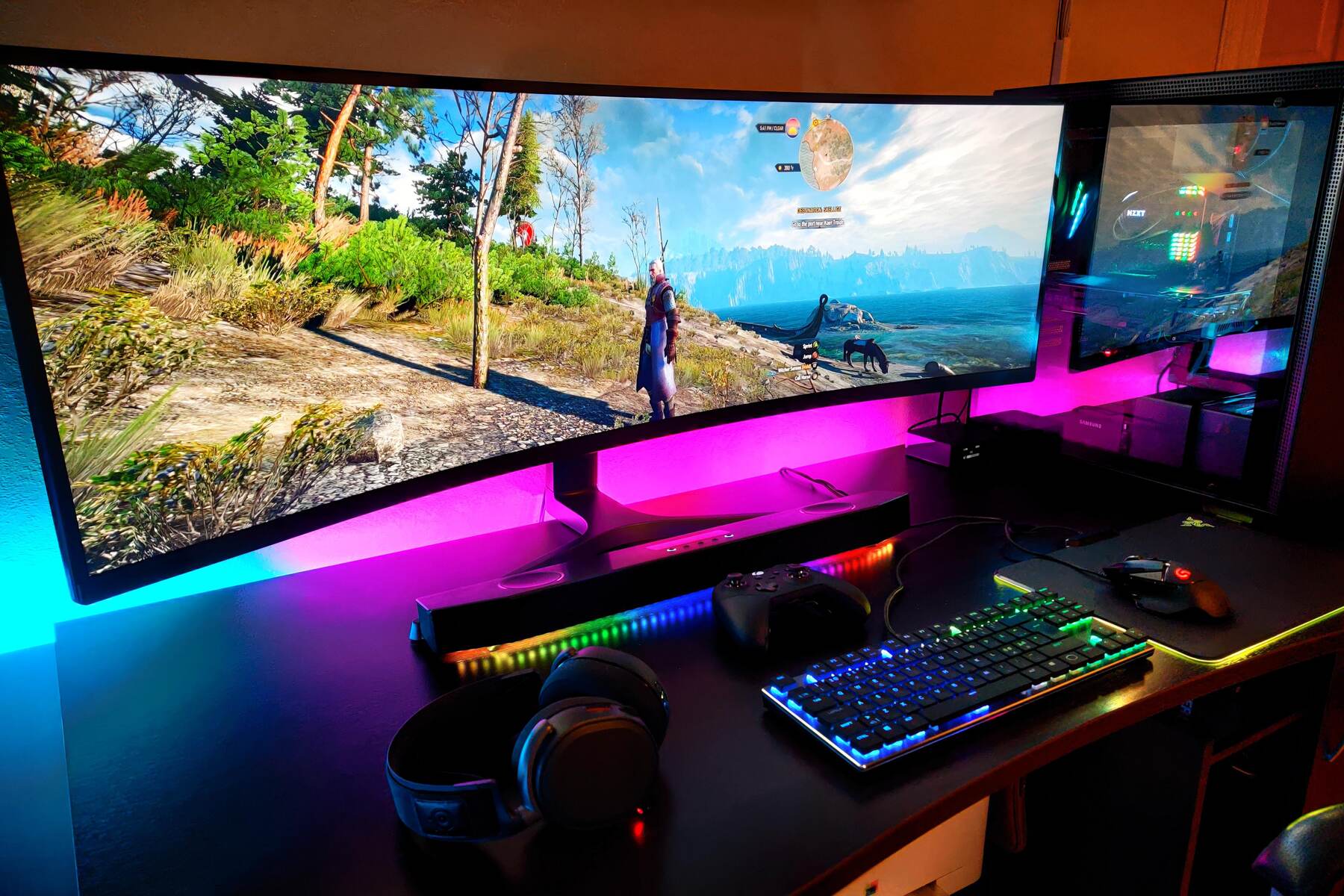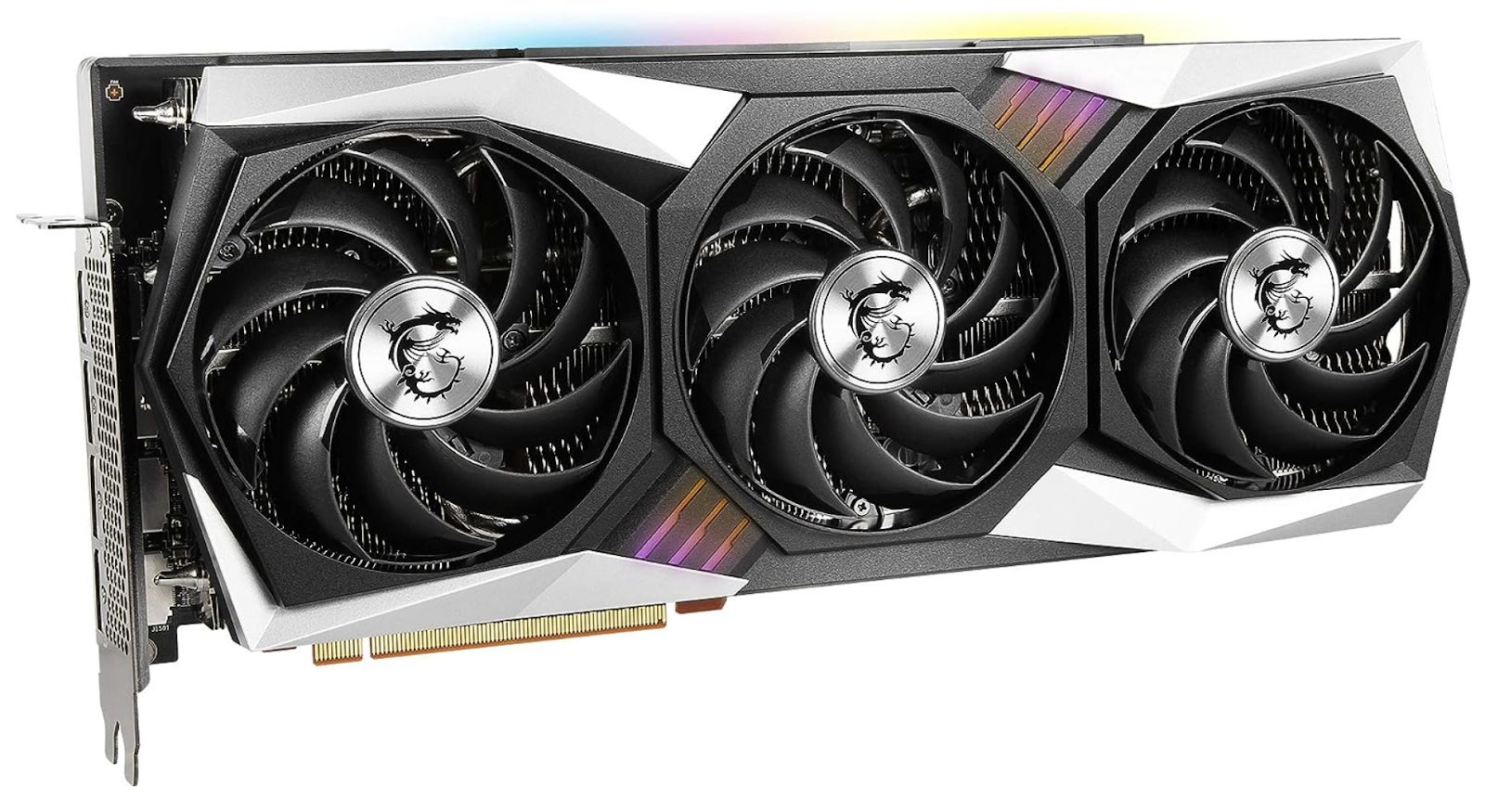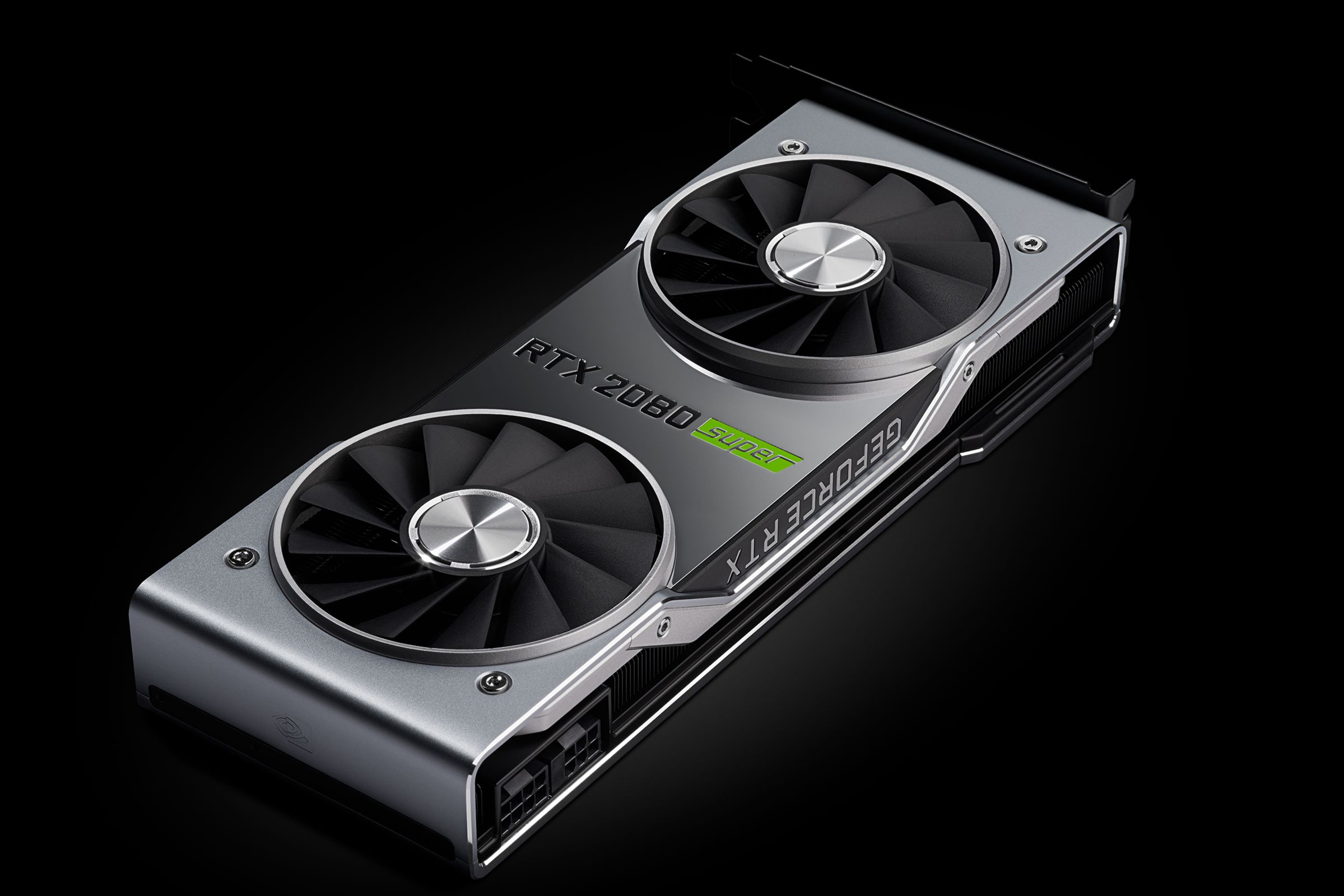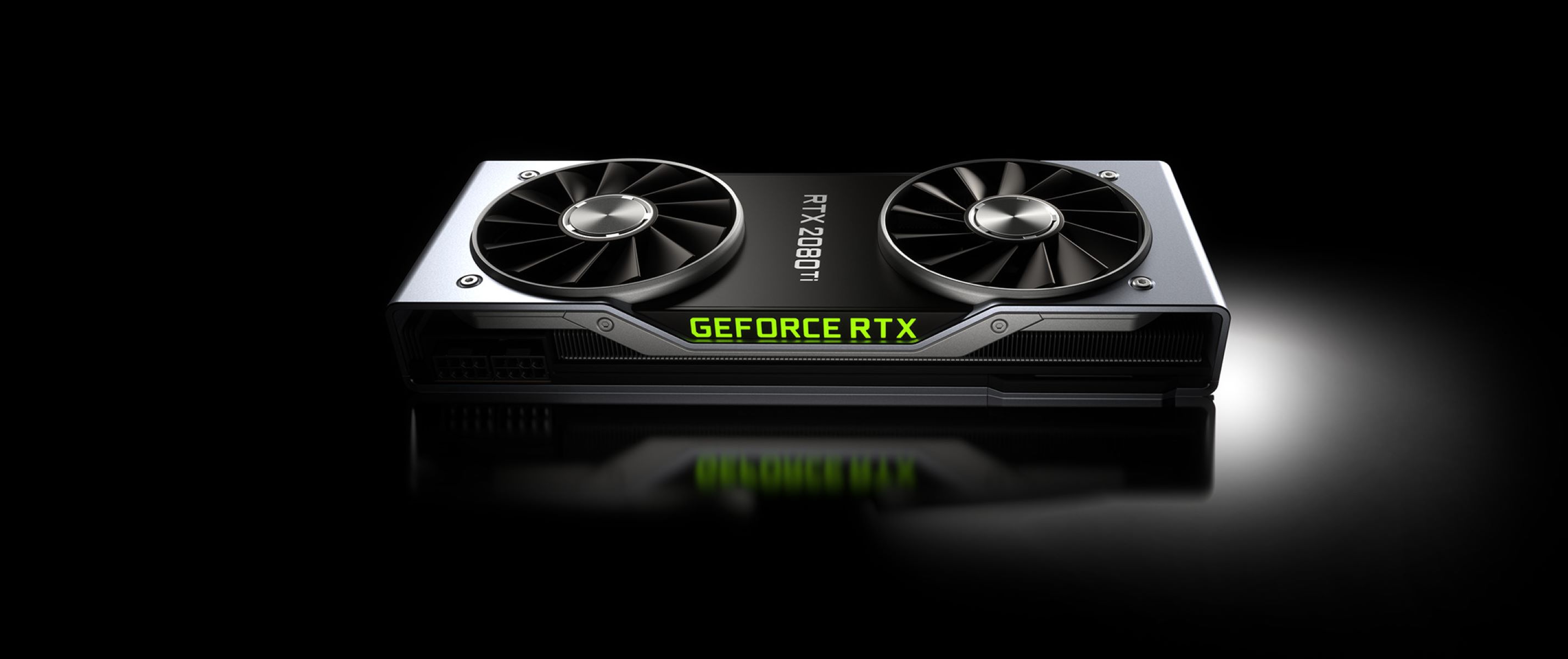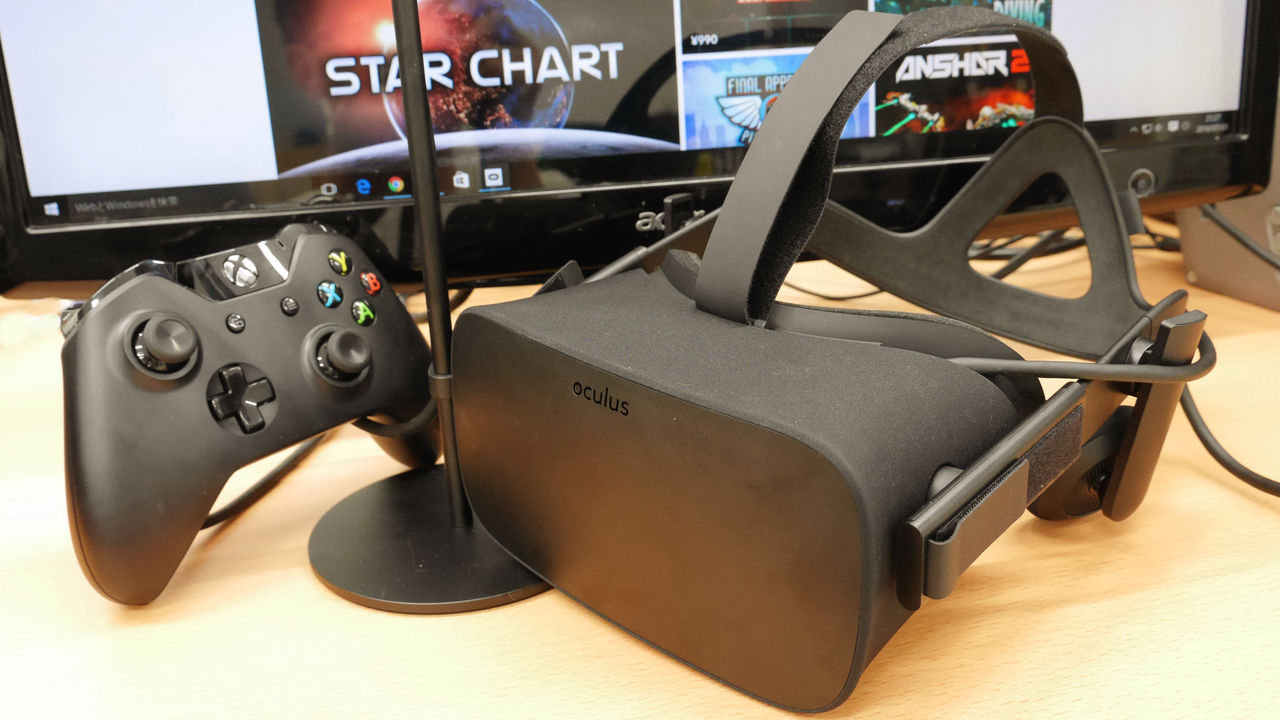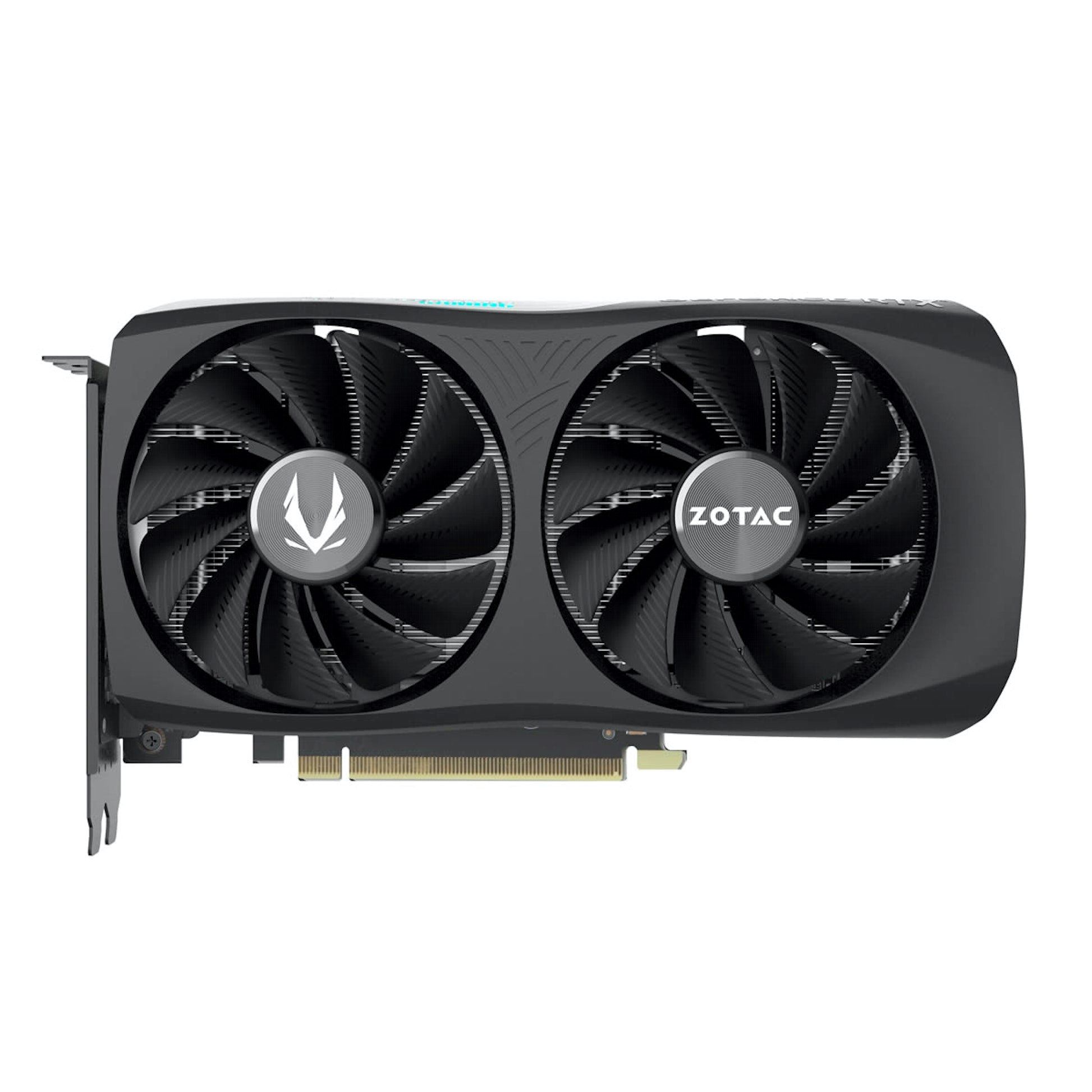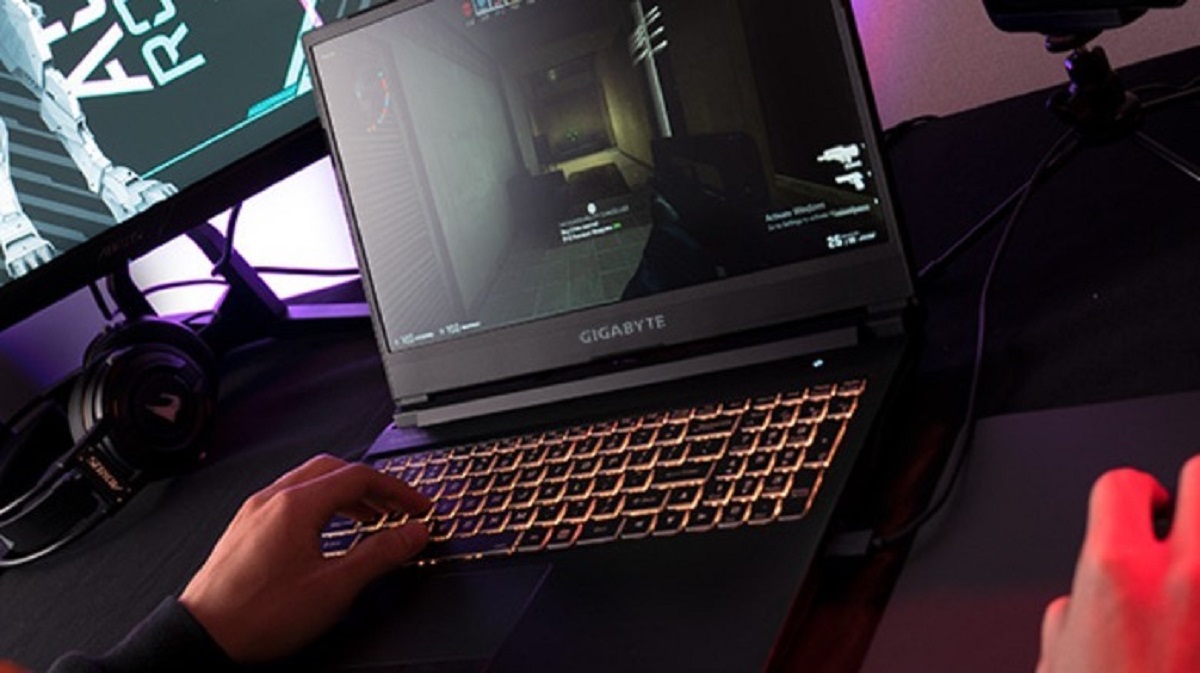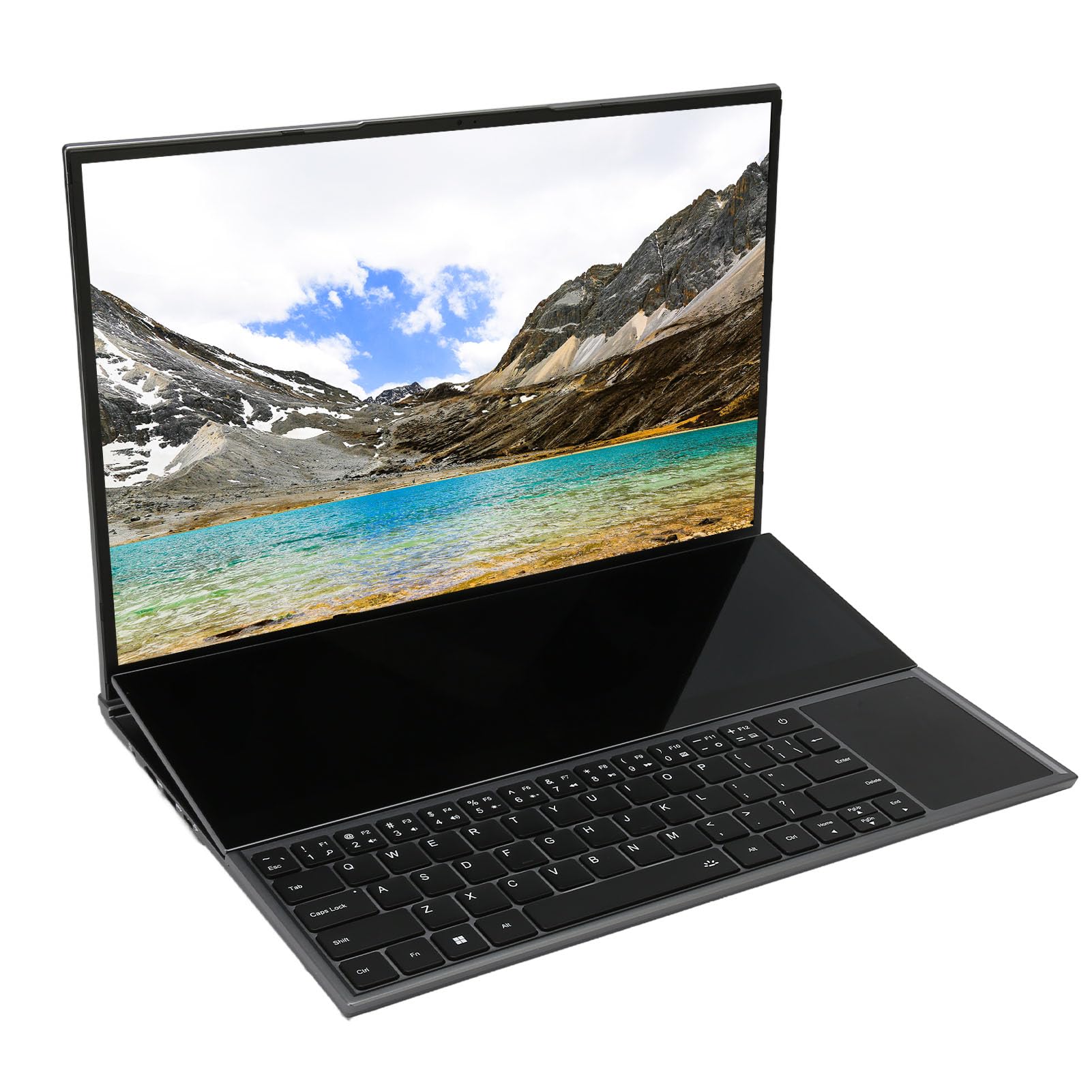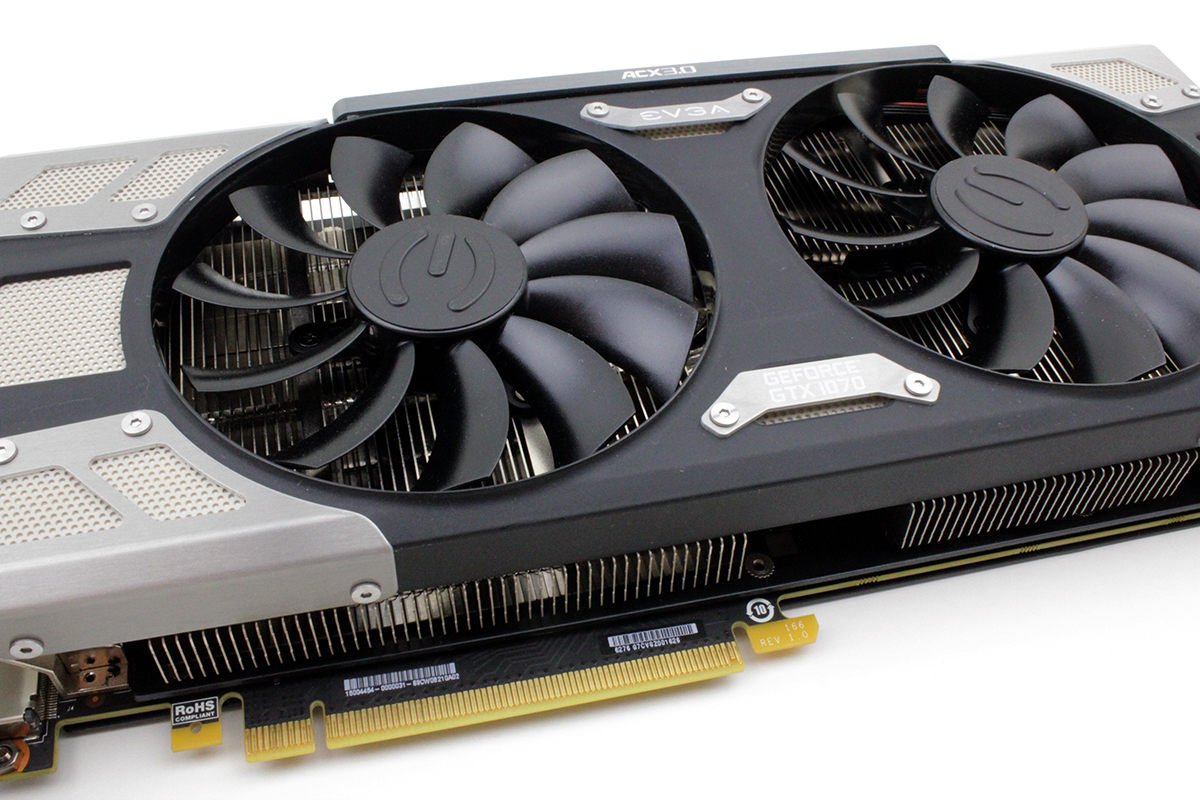Introduction
Choosing the right gaming monitor is crucial for an immersive and seamless gaming experience, especially when paired with a high-performance graphics card like the RTX 2080 Ti. The monitor you select can significantly impact your gameplay, enhancing details, providing smoother motion, and reducing input lag. With the wide variety of gaming monitors available on the market, it can be overwhelming to determine the best one for your needs.
In this guide, we will explore the key factors you should consider when selecting a gaming monitor to complement your RTX 2080 Ti. By understanding these factors, you will be able to make an informed decision and find the perfect gaming monitor that suits your gaming preferences and budget.
From refresh rate and resolution to adaptive sync technology and panel types, each factor plays a vital role in optimizing your gaming experience. We will delve into each of these factors in detail, allowing you to evaluate their importance and identify your priorities in a gaming monitor.
Furthermore, we will discuss factors such as size, response time, and connectivity options to ensure that you have a holistic understanding of the features that can elevate your gaming experience. While some gamers may prioritize a larger monitor for immersive visuals, others may value faster response times to enhance their competitive gaming sessions.
Lastly, we will touch upon budget considerations. Gaming monitors come in a range of price points, and it is essential to find a balance between performance and affordability. By looking for monitors that offer a combination of the features you need without exceeding your budget, you can make a wise investment in your gaming setup.
By the end of this guide, you will have a comprehensive understanding of the factors to consider when selecting a gaming monitor to pair with your powerful RTX 2080 Ti graphics card. Armed with this knowledge, you can confidently make an informed decision and elevate your gaming experience to new heights.
Factors to Consider
When choosing a gaming monitor to pair with your RTX 2080 Ti, there are several important factors to keep in mind. These factors will determine the overall performance and visual quality of your gaming experience. Let’s explore each factor in detail:
Refresh Rate: The refresh rate of a gaming monitor refers to the number of times the screen updates per second. A higher refresh rate, such as 144Hz or 240Hz, ensures smoother motion and reduces motion blur. For competitive gamers or those who enjoy fast-paced action games, a higher refresh rate is crucial for quick reaction times.
Resolution: The resolution of a monitor determines the number of pixels displayed on the screen. Higher resolutions, such as 1440p or 4K, offer sharper and more detailed visuals. However, it is important to note that higher resolutions require more powerful graphics processing capabilities. With the RTX 2080 Ti, you can comfortably handle high-resolution gaming.
Adaptive Sync: Adaptive Sync technologies, such as NVIDIA G-Sync or AMD FreeSync, synchronize the monitor’s refresh rate with the output of the graphics card. This eliminates screen tearing and stuttering, providing a smoother and more immersive gaming experience. Ensure that your chosen monitor supports the adaptive sync technology compatible with your RTX 2080 Ti.
Panel Type: The panel type of a gaming monitor affects the overall image quality and viewing angles. Twisted Nematic (TN) panels offer fast response times but may have limited color accuracy. In-Plane Switching (IPS) panels provide better color reproduction and wider viewing angles but may have slightly slower response times. Vertical Alignment (VA) panels offer a balance between the two, with decent response times and contrast ratios.
Size: The size of the gaming monitor is a personal preference depending on your available space and desired level of immersion. Larger monitors, such as 27 inches or 32 inches, offer a more immersive gaming experience but may require you to sit farther away. Consider the size of your gaming area and the distance you sit from the monitor to find the optimal size for your needs.
Response Time: The response time refers to how quickly a pixel can change from one color to another. Lower response times reduce motion blur and ghosting. Aim for a gaming monitor with a response time of 5ms or lower to ensure smooth gameplay and sharp images.
Connectivity Options: Consider the connectivity options available on the gaming monitor. Look for monitors that have DisplayPort or HDMI ports for optimal compatibility with your RTX 2080 Ti. Additional USB ports and audio jacks can also be beneficial for connecting peripherals and sound systems.
By considering these factors, you can narrow down your options and select a gaming monitor that perfectly complements your RTX 2080 Ti graphics card. Remember to prioritize the features that matter most to you and strike a balance between performance and budget.
Refresh Rate
The refresh rate of a gaming monitor is an essential factor to consider when selecting a monitor to pair with your RTX 2080 Ti. It refers to the number of times the screen updates per second and is measured in Hertz (Hz). A higher refresh rate provides smoother motion, reduces motion blur, and enhances the overall gaming experience.
Standard monitors typically have a refresh rate of 60Hz. However, for gamers seeking a more responsive and immersive experience, higher refresh rates like 144Hz or even 240Hz are available. These high refresh rates make a significant difference, particularly in fast-paced games with quick movements and rapid transitions.
With a higher refresh rate, each frame is displayed for a shorter period, reducing motion blur and making fast-paced action appear much smoother. This can give you a competitive edge in games where split-second reactions are vital.
However, it’s important to keep in mind that achieving higher refresh rates requires a more powerful graphics card, like the RTX 2080 Ti, to consistently deliver the necessary frame rates.
When paired with an RTX 2080 Ti, a gaming monitor with a high refresh rate can fully utilize the graphics card’s capabilities, resulting in a more fluid and responsive gaming experience. The powerful processing power of the RTX 2080 Ti can generate high frame rates in AAA games, and a high refresh rate monitor ensures that each frame is displayed as quickly as possible.
It’s worth noting that while some gamers may prioritize a higher refresh rate, others may prefer monitors with higher resolutions such as 1440p or 4K. It ultimately comes down to personal preference and the type of games you play. If you enjoy fast-paced competitive games, a high refresh rate monitor would be ideal. If you prefer visually stunning single-player experiences, a monitor with a higher resolution may be a better choice.
In summary, when selecting a gaming monitor to pair with your RTX 2080 Ti, consider the refresh rate that will provide the level of smoothness and responsiveness you desire in your gaming experience. A higher refresh rate monitor, such as 144Hz or 240Hz, can elevate your gameplay to new heights, especially in fast-paced and competitive games.
Resolution
When choosing a gaming monitor to complement your powerful RTX 2080 Ti graphics card, the resolution is a crucial factor to consider. The resolution refers to the number of pixels displayed on the screen and directly impacts the level of detail and clarity in your gaming experience.
Standard HD monitors typically have a resolution of 1920×1080 pixels, also known as 1080p. While this resolution can provide a decent gaming experience, the RTX 2080 Ti is capable of much more. With its exceptional graphics processing power, you can comfortably handle higher resolutions to fully immerse yourself in the visuals of your favorite games.
One popular resolution option is 1440p, also known as Quad HD or 2K. This resolution offers significantly more detail and sharper visuals compared to 1080p. Games will appear crisper, and you’ll be able to see more intricate details within the game world. Pairing your RTX 2080 Ti with a 1440p monitor will take full advantage of the card’s capabilities and provide a visually stunning gaming experience.
For gamers who desire the pinnacle of visual fidelity, 4K resolution is the way to go. With a resolution of 3840×2160 pixels, 4K monitors offer an unprecedented level of detail and clarity. Games designed to take advantage of this resolution will showcase incredibly lifelike visuals, making you feel fully immersed in the virtual world. However, it’s important to note that gaming at 4K resolution requires a powerful graphics card like the RTX 2080 Ti to achieve smooth frame rates in demanding games.
It’s essential to consider that higher resolutions can put a heavier load on your graphics card. While the RTX 2080 Ti can handle most games at 1440p and even 4K, it’s worth checking the system requirements of the games you intend to play. Some extremely demanding games may require you to make some adjustments to achieve the desired frame rates at higher resolutions.
Ultimately, the choice of resolution depends on your personal preference and the balance between graphical fidelity and performance. If you prioritize sharp visuals and are willing to sacrifice some frame rates, a higher resolution monitor like 1440p or 4K can provide an unparalleled gaming experience when paired with your RTX 2080 Ti.
In summary, when selecting a gaming monitor for your RTX 2080 Ti, consider the resolution that will deliver the level of detail and visual quality you desire. Whether you choose 1440p or 4K, both resolutions will showcase the capabilities of your RTX 2080 Ti and provide an immersive gaming experience with stunning visuals.
Adaptive Sync
Adaptive sync technology is a crucial factor to consider when selecting a gaming monitor to pair with your RTX 2080 Ti. It helps to synchronize the monitor’s refresh rate with the output of your graphics card, resulting in smoother and tear-free gameplay. The two main types of adaptive sync technologies available are NVIDIA’s G-Sync and AMD’s FreeSync.
G-Sync: G-Sync is a proprietary technology developed by NVIDIA. It requires specific hardware modules to be installed in the monitor, which can result in higher costs. G-Sync monitors are designed to work seamlessly with NVIDIA graphics cards, including the RTX 2080 Ti. They offer excellent performance and provide tear-free, smooth gameplay by dynamically adjusting the refresh rate to match the frame rate output of the graphics card.
FreeSync: FreeSync, on the other hand, is an open standard developed by AMD. Unlike G-Sync, it does not require additional hardware modules in the monitor, making FreeSync monitors generally more affordable. FreeSync monitors synchronize the refresh rate of the monitor with the frame rate output of the graphics card, eliminating screen tearing and providing a smoother gaming experience. While originally designed to work with AMD graphics cards, many FreeSync monitors are now also G-Sync compatible.
Both G-Sync and FreeSync technologies provide similar benefits. They eliminate screen tearing, which occurs when the monitor’s refresh rate and the graphics card’s frame rate are not in sync. They also minimize stuttering and input lag, resulting in a more fluid and responsive gaming experience.
When choosing a gaming monitor with adaptive sync for your RTX 2080 Ti, it’s important to ensure compatibility. NVIDIA now supports a wide range of FreeSync monitors through its “G-Sync Compatible” program. This means that you can take advantage of adaptive sync technology without necessarily purchasing a G-Sync monitor.
By allowing variable refresh rates, adaptive sync technology ensures that each frame is displayed precisely when it is rendered. This leads to smoother motion, sharper visuals, and enhanced immersion in your games. Whether you choose a G-Sync or FreeSync monitor, both options can enhance your gaming experience when paired with your RTX 2080 Ti.
In summary, adaptive sync technology is an important consideration when selecting a gaming monitor for your RTX 2080 Ti. It helps to eliminate screen tearing, reduce stuttering, and improve responsiveness. Whether you opt for a G-Sync or FreeSync monitor, both technologies will enhance the visual quality and overall gaming experience.
Panel Type
The panel type of a gaming monitor plays a significant role in the overall image quality and viewing experience. There are three main panel types to consider: Twisted Nematic (TN), In-Plane Switching (IPS), and Vertical Alignment (VA).
Twisted Nematic (TN): TN panels are known for their fast response times, making them ideal for competitive gaming. They offer rapid pixel transitions, resulting in minimal motion blur and ghosting. However, TN panels generally have narrower viewing angles and lesser color accuracy compared to other panel types. This means that the color reproduction and viewing experience may vary when viewed from different angles.
In-Plane Switching (IPS): IPS panels excel in color accuracy, providing vibrant and accurate colors across a wide range. They also offer wider viewing angles, ensuring that the colors and image quality remain consistent even when viewed from different angles. IPS panels are popular among gamers who prioritize visual quality, as they deliver stunning visuals and immersive experiences. However, they generally have slightly slower response times compared to TN panels.
Vertical Alignment (VA): VA panels strike a balance between TN and IPS panels. They offer better contrast ratios compared to other panel types, resulting in deeper blacks and more vivid colors. VA panels have decent response times, making them suitable for both gaming and content consumption. However, they may suffer from some motion blur in fast-paced games.
The choice of panel type depends on your specific gaming needs and preferences. If you prioritize faster response times and competitive gaming, TN panels can provide the performance you’re looking for. On the other hand, if you value color accuracy and wide viewing angles, IPS panels are an excellent choice for stunning graphics and immersive gaming experiences. VA panels offer a middle ground with good contrast ratios, making them suitable for both gaming and content consumption.
It’s worth noting that alongside the panel type, other factors such as the specific model and technology used by the manufacturer can also impact the overall quality of the display. Therefore, it’s essential to read reviews and compare different models within each panel type to ensure you find a gaming monitor that meets your expectations.
In summary, the panel type of a gaming monitor is a crucial consideration when selecting a monitor to pair with your RTX 2080 Ti. Whether you opt for a TN, IPS, or VA panel, each has its own strengths and weaknesses. By understanding your priorities and comparing different options, you can make an informed decision and enjoy optimal image quality and viewing experience in your gaming sessions.
Size
The size of the gaming monitor is an important consideration when selecting a monitor to pair with your RTX 2080 Ti. The size not only affects the immersive gaming experience but also the practicality and comfort of your gaming setup.
Gaming monitors come in a range of sizes, typically measured in inches diagonally across the screen. The size you choose should be based on your personal preference, available gaming space, and the level of immersion you desire.
A larger gaming monitor, such as a 27-inch or 32-inch screen, can provide a more immersive experience by filling your field of view and making you feel closer to the action. The increased screen real estate allows for more details to be displayed and enhances the overall visual experience. This can be particularly beneficial for open-world games or games with stunning landscapes.
However, it’s important to consider the physical limitations of your gaming area. A larger monitor may require you to sit farther away from the screen to comfortably view the entire display. Make sure that your gaming area can accommodate the size of the monitor without straining your neck or eyesight.
On the other hand, a smaller gaming monitor, such as a 24-inch screen or even a 22-inch screen, can be suitable for gamers who prefer to sit closer to the screen or have limited gaming space. These smaller monitors still offer excellent gaming experiences, especially if you prioritize pixel density and higher resolutions, such as 1440p or 4K.
Additionally, remember that the resolution of the monitor can also impact the perceived size of the screen. Higher resolutions on smaller screens can result in sharper and more detailed visuals.
Lastly, consider your own comfort level when selecting the size of the gaming monitor. Some gamers may find larger screens overwhelming, while others may prefer the immersive experience they provide.
In the end, the size of the gaming monitor is a personal preference that should take into account your gaming space, desired level of immersion, and comfort. It’s crucial to strike a balance between screen size, resolution, and viewing distance to ensure an optimal gaming experience.
Take the time to evaluate your gaming area, consider your preferences, and choose a size that best suits your needs. Whether you opt for a larger or smaller gaming monitor, pairing it with your RTX 2080 Ti will result in an outstanding gaming experience with stunning visuals and smooth gameplay.
Response Time
The response time of a gaming monitor is a crucial factor to consider when selecting a monitor to pair with your RTX 2080 Ti. Response time refers to how quickly a pixel can change from one color to another and is typically measured in milliseconds (ms).
A lower response time ensures that fast-moving objects in games appear sharp and clear, reducing motion blur and ghosting. Faster response times result in smoother gameplay, especially in fast-paced action games where quick reactions are essential for success.
Typically, response times for gaming monitors range from 1ms to 5ms. Monitors with a response time of 1ms are highly responsive and provide the sharpest image quality with minimal motion blur. These monitors are ideal for competitive gamers who require lightning-fast reactions.
Monitors with a response time of 5ms or lower are also suitable options for most gamers, as they still offer smooth gameplay and excellent image quality. However, it’s worth noting that some gamers, particularly professional esports players, may prefer monitors with faster response times to gain a competitive edge.
It’s important to remember that response time is closely related to the panel technology used in the monitor. TN panels are renowned for their fast response times, making them an excellent choice for gamers who prioritize responsiveness. IPS and VA panels generally have slightly slower response times, but they compensate with better color accuracy and wider viewing angles.
When paired with an RTX 2080 Ti, a gaming monitor with a fast response time ensures that the graphics card’s output is displayed quickly and accurately. This provides a smoother and more immersive gaming experience, allowing you to enjoy each moment of gameplay without distractions caused by motion blur or ghosting.
It’s important to note that while response time is a significant factor, it’s not the only measurement of a monitor’s overall performance. Other factors such as input lag and pixel overdrive can also affect the overall gaming experience. Therefore, it’s crucial to read reviews and consider multiple factors when choosing a gaming monitor.
In summary, when selecting a gaming monitor for your RTX 2080 Ti, consider a monitor with a response time that meets your gaming needs. Whether you opt for a 1ms response time or a slightly higher response time, remember to evaluate multiple aspects of the monitor’s performance to ensure a smooth and immersive gaming experience.
Connectivity Options
Connectivity options are an important consideration when selecting a gaming monitor to pair with your RTX 2080 Ti. The available ports and connectivity options determine how you can connect your graphics card to the monitor and can impact the overall functionality and compatibility of your gaming setup.
The most commonly used connectivity options for gaming monitors include:
DisplayPort: DisplayPort is a high-bandwidth digital video and audio interface that provides excellent image quality and supports high refresh rates and resolutions. It is the preferred choice for many gamers and is highly compatible with the RTX 2080 Ti. Look for a gaming monitor with DisplayPort 1.4 or higher for maximum performance.
HDMI: HDMI (High-Definition Multimedia Interface) is another popular connectivity option for gaming monitors. HDMI ports are versatile and can be used to connect your RTX 2080 Ti to the monitor. However, it’s important to ensure that the HDMI version on your monitor supports the desired resolution and refresh rate. HDMI 2.0 and above are recommended for gaming at higher resolutions, such as 1440p or 4K.
USB Ports: Additional USB ports on a gaming monitor can be convenient for connecting peripherals such as gaming mice, keyboards, and controllers. USB ports can also be used to charge devices or connect external storage. Consider the number and location of USB ports on the monitor to determine if it meets your connectivity needs.
Audio Jacks: Some gaming monitors feature built-in speakers or audio output jacks. These audio jacks allow you to connect headphones or external speakers for a better audio experience. If you prefer to use headphones or have a dedicated sound system, having audio jacks on the monitor can be beneficial.
It’s worth noting that in addition to the physical connectivity options, you should also consider the availability of software or firmware updates for the monitor. These updates ensure compatibility with the latest technologies and optimize performance with your RTX 2080 Ti.
Before making a final decision, it’s essential to check the specific connectivity options and requirements of both your RTX 2080 Ti and the gaming monitor. Ensure that the monitor’s connectivity options support the desired resolution, refresh rate, and features of your graphics card.
In summary, when selecting a gaming monitor to pair with your RTX 2080 Ti, consider the connectivity options available. Look for monitors with DisplayPort and HDMI ports that support the desired resolution and refresh rate. Additional USB ports and audio jacks can also enhance the convenience and functionality of your gaming setup. By ensuring compatibility and considering your specific needs, you can enjoy seamless connectivity and optimal performance with your RTX 2080 Ti.
Budget Considerations
When selecting a gaming monitor to pair with your RTX 2080 Ti, budget considerations play a significant role. Gaming monitors come in a wide range of price points, and it’s essential to find the right balance between performance, features, and affordability.
Set a budget range that you are comfortable with and consider the features that are most important to you. Higher-priced monitors often offer advanced technologies, such as higher refresh rates, better resolution, and adaptive sync capabilities. However, it’s important to assess whether these features are necessary for your specific gaming needs.
Consider the types of games you typically play and the level of visual fidelity and performance you want to achieve. If you primarily play competitive games that benefit from high refresh rates and low response times, it may be worth investing in a monitor with these features. On the other hand, if you prioritize visual quality and immersive experiences, a monitor with a higher resolution and better color accuracy may be more suitable.
Research and compare different brands and models within your budget range. Look for reviews and customer feedback to gather information about the performance, build quality, and reliability of the gaming monitors you are considering. This can help you make an informed decision and avoid any potential disappointments.
It’s worth noting that while price is an important consideration, it shouldn’t be the sole determining factor. Just because a monitor is more expensive doesn’t necessarily mean it’s the best choice for your needs. Conversely, a budget-friendly option may provide excellent value for your money while still meeting your gaming requirements.
Lastly, keep in mind any additional costs that may arise, such as extended warranties, mounting hardware, or additional cables. These costs should also be factored into your overall budget and decision-making process.
In summary, budget considerations are an important aspect when selecting a gaming monitor to pair with your RTX 2080 Ti. Assess your gaming needs, prioritize the features that matter most to you, and carefully research and compare different options within your budget range. By finding the right balance between performance, features, and affordability, you can make a wise investment in a gaming monitor that enhances your gaming experience without breaking the bank.
Conclusion
Choosing the right gaming monitor to pair with your RTX 2080 Ti is crucial for a top-notch gaming experience. By considering various factors such as refresh rate, resolution, adaptive sync, panel type, size, response time, connectivity options, and budget considerations, you can make an informed decision that aligns with your gaming preferences and requirements.
Opting for a monitor with a high refresh rate, such as 144Hz or 240Hz, ensures smoother motion and reduces blur, especially in fast-paced games. Pairing your RTX 2080 Ti with a monitor of the appropriate resolution, such as 1440p or 4K, enables you to fully appreciate the card’s capabilities, showcasing stunning visuals and greater detail.
Adaptive sync technology, such as NVIDIA G-Sync or AMD FreeSync, eliminates screen tearing and provides a smoother gaming experience. The panel type, whether it’s TN for fast response times, IPS for better color accuracy and wider viewing angles, or VA for a balance between the two, impacts the image quality and viewing experience.
The size of the gaming monitor will depend on your personal preference and the available space in your gaming area, balancing immersion and practicality. Response time plays a role in how fast-moving objects are displayed, while connectivity options, like DisplayPort, HDMI, USB ports, and audio jacks, provide flexibility and convenience.
Lastly, budget considerations involve finding a gaming monitor that meets your performance and feature needs while staying within your budget range. By researching and comparing different brands and models, you can make an informed decision and choose a gaming monitor that offers optimal value for your money.
Ultimately, when selecting a gaming monitor for your RTX 2080 Ti, it’s essential to consider your gaming preferences, budget, and desired level of immersion. By carefully evaluating the factors discussed in this guide, you can find the perfect gaming monitor that complements your RTX 2080 Ti and delivers an outstanding gaming experience, taking your gameplay to new heights of performance and visual fidelity.







